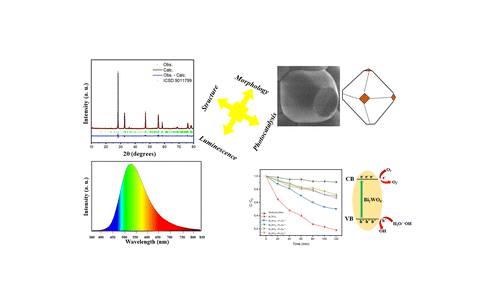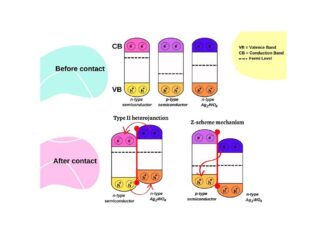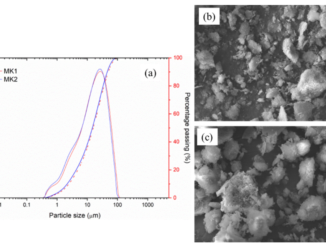
Synthesis and evaluation of photocatalytic and photoluminescent properties of Zn2+-doped Bi2WO6
Abstract: This study consists of the synthesis of zinc-doped Bi2WO6 obtained by the sonochemical method. The XRD results indicated that the samples showed an orthorhombic phase with the P21ab space group without the presence of secondary phases, demonstrating success in the doping process. The results of the photocatalytic tests under the photodegradation of methylene blue showed better performance for the pure sample with 80% degradation during 2 hours of exposure to radiation. The high rate of photogenerated charges accompanied by the low recombination rate of the pairs and e−/h+ were responsible for forming hydroxyl radicals, the predominant oxidative agent of the mechanism. The increase in Zn2+ concentration in the Bi2WO6 matrix promoted inhibition of the photocatalytic properties by the appearance of oxygen vacancies that acted as a charge recombination center. In contrast, photoluminescence was improved by doping with Zn2+. The Bi2WO6:8% Zn2+ sample showed the highest PL intensity. The characteristics of the emitted colors are modulated from the emission spectra and are quantified in terms of the photometric parameters: chromaticity coordinates (x, y), color reproduction index (CRI), luminous radiation efficiency (LER), and purity of color (%) of samples. The adjustment in the colors is promoted as a function of the increase in the Zn2+ concentration observing the transition from: yellow → orange → green. PL is favored by the effect of the dopant (Zn2+) in the matrix, which allows Bi2WO6:Zn2+ to be considered a promising candidate for applications in optical devices. In addition, Bi2WO6 constitutes a high performance photocatalyst for the degradation of methylene blue.
Author(s): L. X. Lovisa; T. B. O. Nunes; R. R. Y. O. V. Wilson; E. Longo; M. Daldind; M. R. D. Bomio; F. V. Motta
Dalton Trans.
Published: 3 Nov 2022
DOI: https://doi.org/10.1039/D2DT03175B
CDMF
The CDMF, hosted at the Federal University of São Carlos (UFSCar), is one of the Research, Innovation and Dissemination Centers (RIDC) supported by the São Paulo State Research Support Foundation (Fapesp), and also receives investment from the National Council Scientific and Technological Development (CNPq), from the National Institute of Science and Technology of Materials in Nanotechnology (INCTMN).




